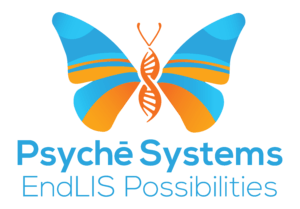Laboratory Information Systems (LIS) are the vital nervous systems of modern laboratories, yet many are still operating with outdated infrastructure. This isn’t merely a matter of aesthetic appeal; it’s a critical, systemic issue impacting everything from efficiency to regulatory compliance and potentially even patient safety. This article explores the compelling reasons to sunset your existing LIS laboratory software and transition to a modern, future-focused solution.
The Crumbling Foundation: Challenges of a Legacy LIS Laboratory
Legacy Laboratory Information Systems, often decades old, frequently struggle to keep pace with the evolving demands of the healthcare industry. These systems, while perhaps adequate in their time, can now be significant impediments, posing a series of challenges that directly impact operational efficiency and patient care:
Technological Stagnation and Scalability Issues
These systems often lack the flexibility and scalability to accommodate advancements in molecular diagnostics, AI-powered analysis, and cutting-edge technologies. Implementing new instruments or analytical techniques can become significantly complex, with legacy systems potentially requiring custom interface solutions that increase costs and reduce overall productivity. As evidenced by this study, legacy LIS software fails to keep pace with shifting trends in the healthcare industry overall. Their fundamental architecture often can’t support the increasing data volumes arising from today’s complexity in patient testing. This weakness leads to slow processing speeds and significantly impacted turnaround times.
Limited Integration Capabilities
Modern laboratories operate in an interconnected ecosystem, exchanging data with other departments, medical imaging systems, and Electronic Health Records (EHRs). Legacy systems often lack the robust APIs and integration capabilities for seamless data exchange. This drawback hinders the flow of patient information, creates data silos, and can directly impair the efficiency of diagnostic workflows. Patient care suffers when vital information is not readily accessible and adequately contextualized.
Security Vulnerabilities and Compliance Risks
The rise of cyber threats poses serious risks to laboratories, and legacy LIS systems often lack the robust security protocols necessary to withstand modern attacks. Maintaining compliance regulations like HIPAA is also becoming increasingly complex and costly, driving the necessity for a robust compliance approach from the ground up. Failure to meet HIPAA guidelines could have substantial consequences for penalties and your lab’s public reputation.
High Maintenance Costs and Limited Customization
The cost of maintaining a legacy system tends to grow over time, encompassing not only hardware but also the expensive expertise needed to keep it functioning. Many labs resort to “workarounds” or custom software integrations, creating a maze of code that is difficult to maintain, debug, and evolve into a flexible solution for the future. This can hinder your ability to invest in innovation and modernization, potentially putting your lab at a competitive disadvantage.
The Illusion of an Incremental Approach
Patches and “upgrades” for legacy systems often only temporarily mask underlying problems. This approach can create a complex, unstable framework that requires continuous maintenance and usually introduces new vulnerabilities.
Benefits of a Strategic Sunset Strategy
Replacing a legacy LIS isn’t simply an upgrade; it’s a strategic investment in the future of your laboratory. A modern, future-proof solution offers tremendous benefits:
Enhanced Efficiency and Streamlined Workflows
Modern LIS systems are designed with streamlined workflows, minimizing manual steps, maximizing automation, and eliminating bottlenecks that often characterize legacy systems. These features translate directly into faster turnaround times, reduced errors, and improved overall efficiency.
Future-Proofing Your LIS Laboratory
Cloud-based solutions allow for readily adaptive features and easily accommodate expanding data. This advantage enables laboratories to confidently embrace emerging technologies and maintain their competitive edge in the rapidly evolving healthcare sector.
Improved Data Security and Regulatory Compliance
Modern systems are designed with robust security measures and compliance considerations. They facilitate ongoing adaptation to regulatory updates and evolving cyber threats and protect laboratory and patient data.
Seamless Integration and Data Sharing
Modern LIS systems integrate seamlessly with other critical systems, allowing laboratories to communicate smoothly with EHRs, imaging systems, and other departments to create a comprehensive, accessible patient record. This integration enhances decision-making efficiency and leads to better overall patient care.
Reduced Long-Term Costs and Increased ROI
While an initial investment might seem significant, the long-term maintenance costs, compliance fines, and security vulnerabilities associated with outdated systems are often far more significant. They may lead to significantly reduced ROI in the long run. A modernized and future-proofed system saves your business time and money over the long term by reducing the need for extensive patches and upgrades in the later stages of the LIS life cycle.
Mapping the Change: The Importance of Careful Planning
Change doesn’t happen overnight. It requires careful planning with collaborative partners that understand the challenges of specialized laboratories. Finding the right partner means defining selection criteria, evaluating investment, and establishing an implementation strategy. This careful planning ensures a smooth transition and prepares your lab for the future.
Defining Selection Criteria
When looking for a new LIS partner, rank choices according to must-haves, need-to-haves, and nice-to-haves. Prioritizing criteria keeps the critical capabilities up top. A robust LIS laboratory solution should include:
- Platform: The operating platform determines a solution’s agility. Cloud-based solutions leverage inherent features to allow scalability with minimal lead time. Laboratories can add new functionality without worrying about additional hardware resources., and connectivity can happen from anywhere.
- Integration: A system that can work with other solutions is critical to faster response times and improving patient experience. Genetic labs need systems that integrate with genomic data repositories, and pathology labs need solutions that exchange information seamlessly with existing platforms. Integrating with endoscopy systems improves data transfer and reporting. Ensuring that an LIS is compatible with automated liquid handling systems reduces the risk of contamination and error.
- Security: Specialized laboratories are part of the healthcare supply chain, making them prime targets for cybercriminals. Patient data must be protected at all costs, and violations can result in penalties. A robust LIS should have stringent security features to ensure compliance with regulatory requirements.
Establishing an Implementation Strategy
Without a plan, a goal is just a wish. Daily emergencies and shifting priorities can quickly derail an implementation strategy. With established milestones and resource accountability, stakeholders can identify data for migration. Collaboration among laboratory personnel can help improve workflow and schedule training so everyone understands the system.
Conclusion
The path forward for your laboratory is clear: sunset your legacy LIS and embrace the future. A modern LIS presents a significant opportunity for efficiency gains, operational improvements, and enhanced patient care. Partnering with a vendor like Psyche Systems, which understands the specific needs of specialized labs, can lead to a transformative journey. Contact us today to begin your journey to a more efficient, secure, and future-proof laboratory.

